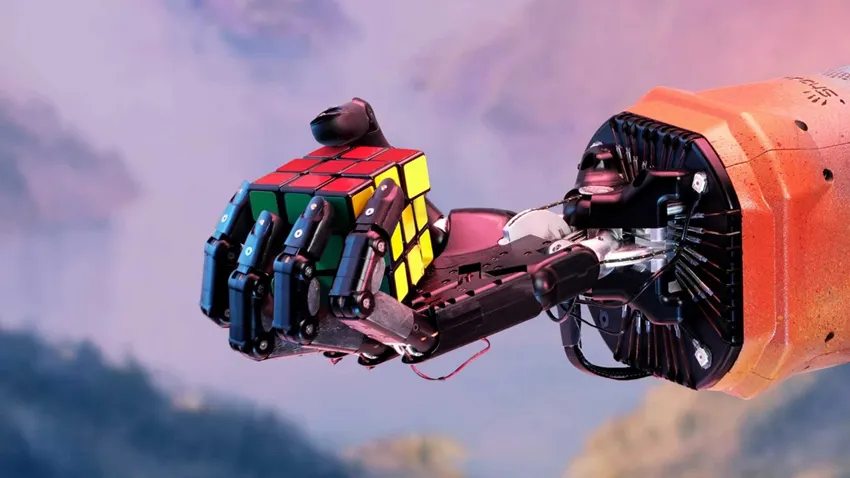As intelligent robots move from research labs into real-world applications — factories, hospitals, homes — one factor becomes increasingly clear: data is destiny. Just like large language models rely on internet-scale corpora, embodied AI needs large-scale, high-fidelity, and task-relevant data to perform in diverse, unstructured environments.
But collecting and scaling such data is far from straightforward.
1. Why Scalable Robot Data Is So Hard
1.1 Scarcity of High-Quality Embodied Data
While vision and language AI benefit from massive, publicly available datasets like ImageNet or Common Crawl, robot learning lacks comparable resources. Most existing robot datasets are:
-
Sparse: Only cover limited tasks (e.g., pick-and-place, pushing).
-
Narrow: Captured in lab-like settings with static cameras and few objects.
-
Non-transferable: Difficult to generalize from one domain (like household kitchens) to another (like hospital wards).
Example: The “RoboNet” dataset from Berkeley includes over 15 million robot trajectories, but most involve simple arm manipulation tasks in highly controlled setups.

1.2 Environment and Task Diversity
Robots must operate across:
-
Indoor vs. outdoor
-
Factory vs. home vs. hospital
-
Predictable vs. dynamic scenes
Each new domain brings new object types, lighting conditions, textures, and motion patterns. This makes generalization incredibly difficult.
Example: A robot trained on warehouse shelving may completely fail in a grocery store aisle due to differences in item placement, lighting, and floor reflections.
1.3 High Cost of Data Collection
Collecting robot data isn’t just about sensors. It involves:
-
Expensive hardware: robotic arms, mobile platforms, dexterous hands.
-
Human-in-the-loop operation: experts must control or supervise robots in complex tasks.
-
Massive infrastructure: motion capture rigs, VR systems, data servers.
Example: Boston Dynamics’ Spot robot costs over $70,000, excluding the cost of deployment environments and annotation systems.
1.4 Complex and Labor-Intensive Annotation
Robotics data often demands rich, structured annotations:
-
3D pose, joint angles, gripper status
-
Task-level success/failure outcomes
-
Human affordances or safety zones
-
Semantic segmentation of tools or targets
Some require expert knowledge to annotate correctly, such as surgical robotics or precision assembly.
Example: Annotating robotic grasp outcomes across varied object types involves both mechanical understanding and physical trial-and-error.
2. Strategies for Scalable Robot Learning Data
To overcome these limitations, researchers and companies are exploring four complementary data pipelines:
2.1 Real Robot + Human Demonstration
-
Human teleoperates robot via VR or joystick.
-
Data captured with motion capture + robot sensors.
-
Enables imitation learning from expert demos.
Tools used: Oculus, OptiTrack, RealSense, UR5, Franka Emika.
Case: Google’s SayCan project used real-world robot demos plus language commands for household tasks.

2.2 Simulated Robot + Human-in-the-Loop
-
Human controls a robot avatar in physics-based simulation (e.g., NVIDIA Isaac Gym, Unity).
-
Faster, safer, and cheaper than real-world data.
-
Can vary objects, textures, lighting at scale.
Example: Meta’s Habitat-Sim used simulated navigation tasks for embodied AI agents in photorealistic homes.

2.3 Human Motion Capture-Only
-
Capture real human performing task.
-
Learn affordances or motion priors directly from human bodies.
-
Used for: humanoid control, legged locomotion, kitchen tasks.
Example: Open X-Embodiment dataset includes human-to-robot motion mappings from diverse sources.

2.4 Fully Synthetic (Sim2Real)
-
Use simulation + domain randomization + reinforcement learning.
-
Generate large amounts of task-specific data without humans.
-
Limitations: transfer to real-world remains challenging, especially for contact-rich manipulation.
Example: OpenAI’s “Rubik’s Cube” hand demo used thousands of years of simulated RL time to solve real-world manipulation.

3. Emerging Scalable Datasets for Embodied AI
While still nascent, several open initiatives are building large-scale embodied datasets:
-
Open X-Embodiment (DeepMind + Google): Combines data from 22 robot types, over 500 skills, unified into a common API.
-
BridgeData v2 (Google): Multi-modal, multi-task robot data with RGB-D, proprioception, actions, and language goals.
-
EPIC-KITCHENS: Egocentric video dataset from real kitchen users, used for hand-object interaction and action recognition.
-
BEHAVIOR-1K (Stanford): Simulation dataset with 1,000 household activities using 92 object categories.
-
Robosuite + Isaac Sim: Toolkits enabling large-scale simulation-based robot learning with parallel environments.
4. Toward a Unified Robotic Data Layer
To scale embodied intelligence like we did with language models, the field needs a “COCO/ImageNet moment” for robotics: diverse, richly labeled, high-volume datasets with shared APIs and benchmarks.
We envision a comprehensive, multi-modal robot data platform that integrates:
-
Visual, tactile, auditory, proprioceptive signals
-
Human demonstration, simulation rollouts, real-world trials
-
Modular task definitions across manipulation, navigation, interaction
-
Open interfaces to train, evaluate, and deploy across robot morphologies
5. Final Thoughts
Smart robots will not emerge from hardware alone. Like GPTs and diffusion models, they will be built on the back of data at scale — but not just any data. They need embodied, interactive, structured, and diverse experiences.
As the ecosystem of open tools and shared datasets expands, we may finally cross the chasm from prototype demos to general-purpose embodied agents.
Know a promising robotic dataset or want to collaborate on building embodied data pipelines? Drop an inquiry to connect!



